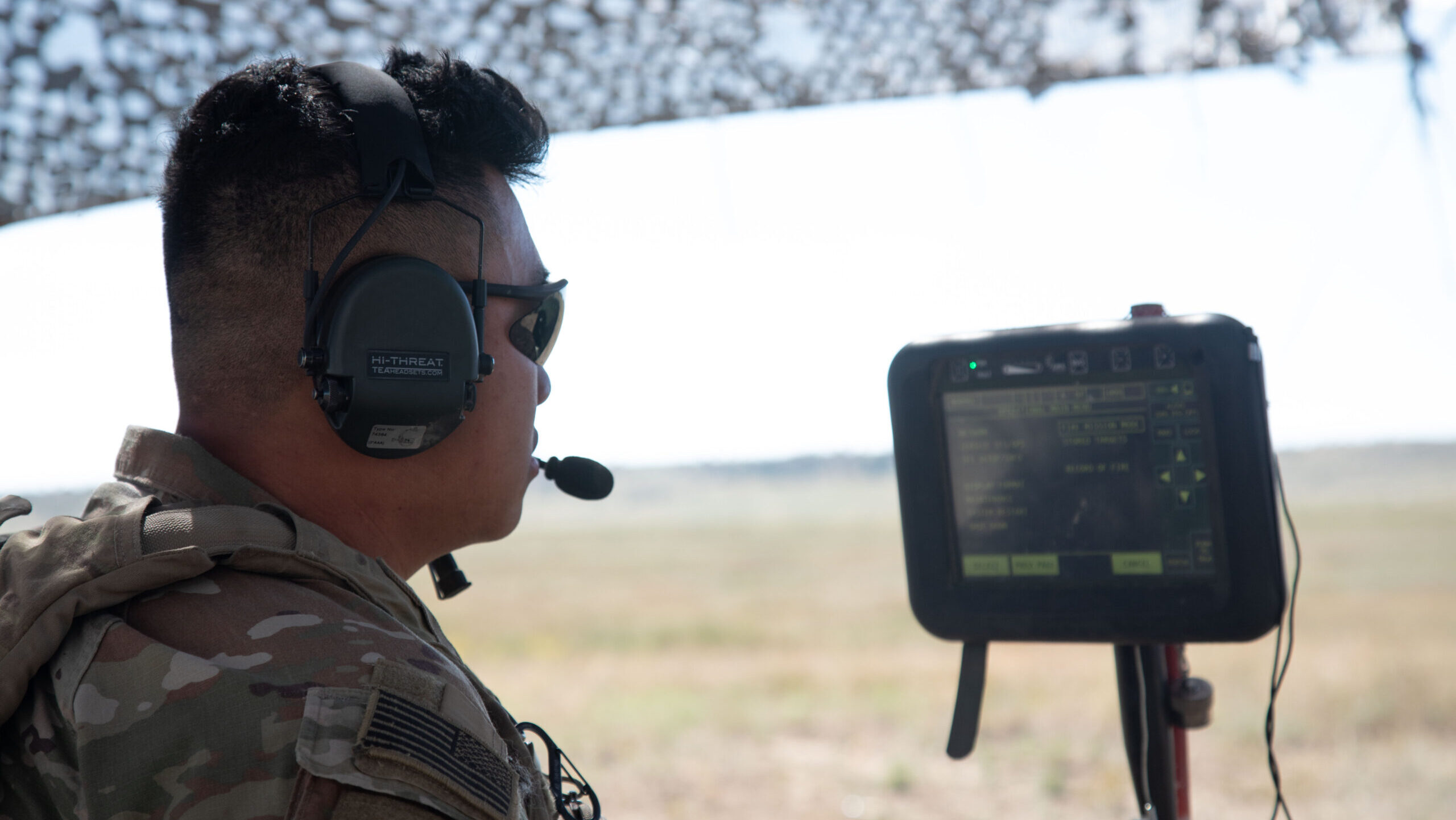Copyright Breaking Defense

WASHINGTON — The Army is expanding the scale and complexity of its Next Generation Command and Control (NGC2) prototype experiments, including for the first time introducing AI-aided target recognition at an exercise this week. “We’re using the aided target recognition capability that we’ve built out to say, ‘That’s a tank.’ We spent the last week training the AI models to recognize what we would call hulks out in the impact area — old vehicles that we shoot at — and we’re training [it to say] ‘That thing, I think that’s the tank,'” Maj. Gen. Patrick Ellis, commander of 4th Infantry Division, told reporters Wednesday. “Now it identifies that as a tank, which generates the fire mission. The complexity has continued to grow.” The AI capability was included in the ongoing, second iteration of the 4th ID’s Ivy Sting series of experiments, designed to incrementally test and assess one of the service’s NGC2 prototypes in increasingly complex environments, eventually scaling it up from a battalion level all the way up to a division for next summer’s Project Convergence. (Ellis and other Army officials spoke to reporters on a call from the back of a Stryker armored vehicle, a brief pause in the experiments.) At Ivy Sting 1, which took place in September, the Army used a limited fires thread to test how data was passed from target acquisition through staff section to the gun on the range through a beta version of the new Artillery Execution Suite (AXS) tool. That version only involved an observer on a hill and a drone for battle damage assessment and target acquisition. RELATED: Army says it’s mitigated ‘critical’ cybersecurity deficiencies in early NGC2 prototype Introducing AI to aid target recognition, Ellis said, should make the division faster, though he counted quantify by how much. While the system is good right now at identifying one target, the key will be adding in more targets to have the AI differentiate between them. “What we’re finding is we’ve got to spend a lot of energy making sure that we train our models adequately, that’s a huge piece of what we’re going to what we’re going to do,” Ellis said. “As we employ those things, there’s pieces of it that get kicked out for a human to decide on. There’s cases where the machine can say, ‘Look, I’m very highly confident that this is a tank’ and then the human looks at that and work the targeting threads. “I think that there’s a lot of potential there,” he said. “I think we’ve seen it. We’ve worked very closely with some pretty powerful AI companies here and the team that’s on the ground here is helping us think through these problems and helping us train the models adequately.” RELATED: The Pentagon is using artificial intelligence right now. Here’s how. Ivy Sting 2 is also adding more and dispersed C2 nodes across the battlespace. This time around there are six C2 nodes with different edge nodes to stress the network and help determine the right mix of transport capability or compute and store capability. Ellis said he’s “really excited” about the second increment of the experiments, because the 4th ID is “running what we would call battle rhythm events — normal boards and procedures that we would run in an exercise — and we’re running those in a much more distributed way. “The ones I sat in on Monday were way different than the ones I sat in today and we’re continuing to get better every time,” he said. Ellis said they will continue to incrementally add complexity in each Ivy Sting exercise. For Ivy Sting 3, they’ll look to add eight more nodes. “We’re getting additional capability every day, and we’re making that capability better. My goal is to be better than we were yesterday and I think that certainly would be true,” he said. Moreover, Sting 1 only had one gun, an M777A2. Sting 2 has three guns, and the plan is for Sting 3 to add a battery, moving up from a platoon. They’ll also look to work airspace deconfliction, which Ellis described as a complicated problem. “The goal in the division is not to just optimize the way we were already organized with new technology. It’s actually use this technology in a fundamentally different way,” he said. “What we’re going to walk away with … is how do we employ this new technology in a way, how can we change our operational approach to embrace the new technology, not necessarily take the new technology and just optimize the way that we’ve always done things?” Beyond going on offense, the Army executive NGC2 lead Joseph Welch said NGC2 is informing the Army’s practices elsewhere, including in cybersecurity. “Our approach to how we rapidly evaluate our cybersecurity posture, is something that we’ve absolutely improved upon from an institutional perspective,” Welch, who also serves as deputy commanding general at Transformation and Training Command, told reporters. “We’re now at a point where when Gen. Ellis, or his team, or through our industry partners, are able to identify new capabilities out there, the speed at which we’re able to on ramp them into our accredited environment is measured in days at this point in a process that normally would take nearly up to a year.” Welch also described how the process has broken down historic barriers between concepts of tactical data and enterprise data. Now, “it’s all just Army data” and it’s accessible at every echelon, he said.



